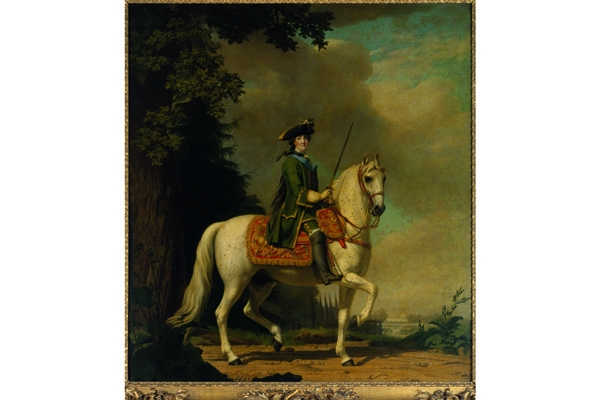Catherine the Great was born neither a Catherine nor with any prospects of greatness. As Sophie Frederica Augusta of Anhalt-Zerbst she was a minor German princess with modest expectations, but when the Empress Elizabeth of Russia chose her to be the consort of her nephew and heir, the Grand Duke Peter, Sophie’s and Russia’s fates were transformed.
In 1744 the 15-year-old Sophie arrived in her new country, converted to Orthodoxy, changed her name to Catherine and set about becoming history’s ultimate self-made woman. She was to rule Russia for 34 years and turn it into a global power. She overhauled Russia’s economy, foreign policy, legal system and education; she expanded its boundaries and encouraged its arts and sciences. In the meantime she corresponded with the French philosophes and became the most talked-about woman in the world. Voltaire called her ‘the brightest star of the North’ and envied the scholar who in 100 years would come to write her biography, not least because she had, in Denis Diderot’s words, ‘the soul of Brutus and the heart of Cleopatra’.
Voltaire’s envy was well placed: Catherine has proved irresistible to subsequent biographers and now the National Museum of Scotland in Edinburgh is presenting another; this time, though, it is a visual Life. On the 250th anniversary of her accession to the throne, its exhibition Catherine the Great: An Enlightened Empress tells her story through 300 works of art on loan from the Hermitage in St Petersburg, the palace-museum complex she founded to show off her burgeoning collections.
As a foreigner, a usurper (she overthrew her feckless husband Peter III in a coup) and a perceived regicide (Peter was strangled by the brother of her lover Grigory Orlov, though not on her orders), Catherine’s arts patronage was propagandist as much as aesthetic. New palaces, paintings and objets d’art were designed to express her legitimacy, power and Russianness. Just as Alan Clark waspishly reported of Michael Heseltine, Catherine was someone who needed to buy her own furniture. By the end of her life, for the greater glory of herself and her country, she had amassed some 3,000 paintings, 40,000 books and 10,000 engraved gemstones.
The majority of items in the exhibition are of a suitably imperial luxury, the chattels of a woman who was part Mother Russia and part La Reine Soleil. Although her own preference was for the restraint of Neoclassicism rather than the prevailing exuberance of the Rococo, the sheer glitz of the objects on display is not noticeably dulled. During her reign, for example, the full extent of Russia’s mineral wealth began to be understood and each discovery meant that a vase or obelisk in the newly discovered stone was dispatched to Catherine. The most striking example being a model grotto-fountain in agates, jaspers, cornelian and quartzes carved in the Imperial Lapidary Factory that, despite its extraordinary vulgarity, the Empress displayed in her dressing-room.
More easy on the eye are the examples of the Sèvres Cameo Service bought as a gift for her lover and possibly secret husband Count Potemkin in 1776. The 744-piece ensemble used motifs from Louis XVI’s cameo collection and was so expensive that it took Catherine 24 years to make the repayments. Potemkin, unsurprisingly, was delighted with the present and gave her an angora cat in return which she dubbed ‘the cat of cats’. The exhibition also has examples of the 944-piece Green Frog Service she ordered from Wedgwood for the Chesme Palace. The small amphibian squatting on each item is there because the palace was originally the Kekerekeksinen Palace which took its name from the Finnish for ‘frog marsh’. The service is decorated with 1,222 different views of the British Isles.
Other items include a dazzling selection of snuff boxes, clocks, fans, costumes, decorated guns and gilt furniture. There is also a case of medals Catherine presented to her Scottish doctor, John Rogerson, the man who checked her potential lovers for diseases, and a double portrait of her granddaughters by the French society painter Elizabeth Vigée-Lebrun which the Empress thought made the Grand Princesses look like ‘pug dogs’ or ‘repulsive little French peasant girls’.
The single most striking piece, however, is a magnificent gilded sledge carved like the prow of a ship with the battling figures of St George and the dragon. It was on just such a vehicle that the Empress would visit the St Petersburg ice fairs and enjoy the thrill of high-speed sports. She even had a summer wheeled slide built that was three storeys high from which she would descend at speeds of up to 50 mph. It was as if the Queen were to take up bungee-jumping.
This fascinating exhibition will not be travelling so this is a rare chance to see these high-end gewgaws and an opportunity to look round the not-quite-palatial but handsomely revamped National Museum of Scotland at the same time.






Comments